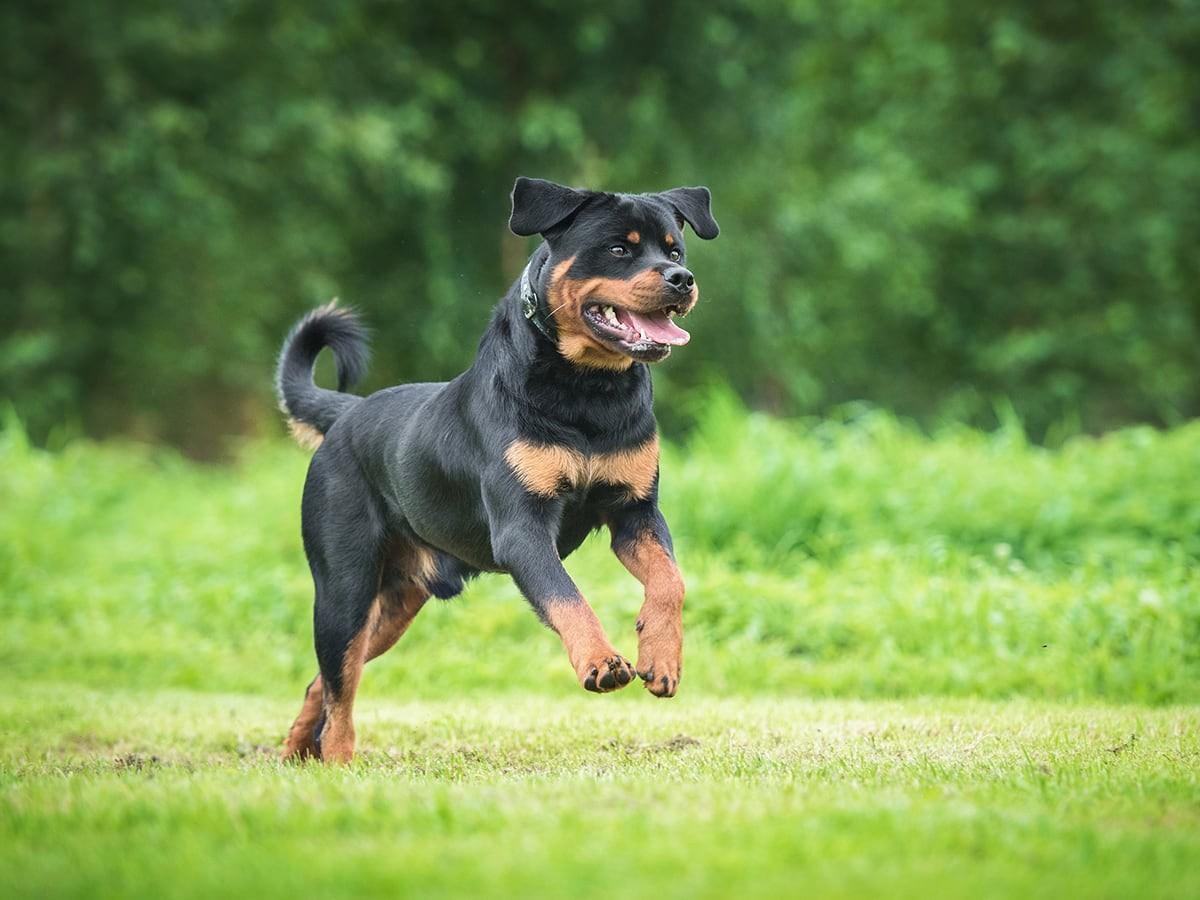A reactive dog can be best explained with an example. Imagine this – You’re walking in the park with your dog on a beautiful sunny day. Birds are chirping, kids are playing, and everything seems perfect…almost. Just then you see a beautiful lady walking with her dog. You look at her. You're smiling, she’s smiling. You can already imagine how your kids are going to look. Now everything seems perfect.
Just then you look at your dog thinking that introducing the dogs can be a great way to start a conversation. But your sweet and calm dog has now transformed into the Hulk. It’s like a barking, lunging, whirling tornado of fur and fury.
This is what we call a ‘Reactive Dog’. You can also call them the drama queens of the canine universe.
What Does it Mean When a Dog is Reactive?
You’ll see that most dogs react to different stimuli. It is usually something that alarms them of a potential threat. It could be a stranger at the door or some high-pitched sound that only they can hear as their listening ability goes as high as 47,000 to 65,000 Hz. This is normal. But when it comes to reactive dogs, they take the reaction, multiply it by 10 and then add another 100 to it. (1)
The intensity level of reactive dogs is disproportionate. They may keep barking for a long time even after the stimulus is no longer present. It may look like they have a lot of aggression in them but the overreaction is actually caused by fear, excitement or frustration deep down.
These behaviors can stem from multiple factors. For example, a dog’s genetic herding disposition taken to an extreme, past experiences of trauma, lack of socialization at a young age, etc.
Here are some body language cues of a reactive dog – (1)
Barking
Growling
Lunging
Spinning
Extreme Vigilance
Restlessness
Whining
Hunching
You’ll see a reactive dog usually bouncing around frantically, trying to get out of the harness, trying to hide behind you, pulling you away, grabbing your clothes and shaking, trying to jump in your arms, etc. (2)
Do Leashes Make a Dog Reactive?
Leashes primarily do not cause reactivity in dogs. It is always the situation in front of them that causes it. Having said that, leashes do make them feel disabled when they are in a fight or flight situation because of a perceived threat.
Interestingly, the leash can also become a medium of transfer of stress from you to the dog. Your dog may be able to sense your mood and stress level by the way you hold the leash. It is known that dogs do get stressed when they feel their owners are stressed. And stress can also cause reactivity in some dogs. (3)
What is a Fear Reactive Dog?
A fear-reactive dog is one who actually feels afraid in certain situations and reacts accordingly as against just for the dramatic effect of it. The idea of their fear can sometimes be harmless like a passing car or your mailman but for them, it takes them to a past trauma. And the reaction is their way of yelling "Help! Danger is near!"
Can I Train my Dog to Not be Reactive?
Yes, you can. There are multiple ways you can help manage reactivity in your dog. They include – (1)
Remove stimulants
This is one of the best and easiest ways to manage reactivity in dogs. Try to manage the environment or the situation that makes your dog feel uncomfortable. For example, if your dog gets intimidated by crowds, take a walking route with fewer people on it. However, it may not be the best way to prevent reactivity in the future.
Train your dog
You can use science-backed training methods like positive reinforcement to teach your dog not to react in certain situations. Use treats to reward them when they do not react. This will help them associate not reacting with treats and hence will increase the chances of your dog not reacting the next time.
Socialize them
If your dog reacts badly to strangers, start by introducing 1 new person at a time. Use positive reinforcement again. You may not be able to create a completely extroverted dog here but you may at least get one who is comfortable being in the same room as strangers.
While you try these techniques, here are some tips for you –
Do not try to scold or punish your dog when they react
Get a body check-up done for them
Avoid keeping the tension on the leash while your dog is reacting
More About Spot Pet Insurance
The reason we suggested getting a body checkup done for your dog is that reactivity can sometimes be a sign of internal discomfort caused by an underlying medical condition. Dogs are prone to multiple illnesses and medical conditions during their lifetime including injuries and accidents. The cost of their treatment can put a big dent in your savings at times.
Not with pet health insurance though. With pet health insurance you can save up to 90% of the treatment costs. With Spot Pet, you can save many more costs.
Spot accident and illness plans can be used with any licensed vet in Canada or the U.S. Whether you are home, or traveling to the U.S., veterinary services your pet receives for the diagnosis, treatment, or management of covered conditions can be eligible for reimbursement. Spot’s accident and illness plans can help cover a variety of conditions including broken bones, lacerations, aggression, kidney disease, diabetes, and more. With the addition of Wellness Riders for an extra cost, you can also receive reimbursements for wellness exams, certain vaccinations, dental cleanings, and more.
Learn more about dog insurance or get a free quote!

I've had the privilege of immersing myself in the realm of pet safety. As the owner of an energetic mini golden doodle, I know just how stressful being a pet owner can be. I am dedicated to ensuring our beloved pets enjoy a life brimming with good health.
1.Cpdt-Ka, V. S. (2024, February 2). What is a reactive dog? Signs and how to help. PetMD. https://www.petmd.com/dog/behavior/reactive-dog
2. Trust, D. (2024, March 5). Signs your dog is reactive and what to do if they are. https://www.dogstrust.org.uk/dog-advice/training/unwanted-behaviours/reactive-dog
3. Dealing with Leash Reactivity | Network Partners. (n.d.). Best Friends Animal Society. https://network.bestfriends.org/proven-strategies/operations/medical-cleaning-care/dealing-leash-reactivity












